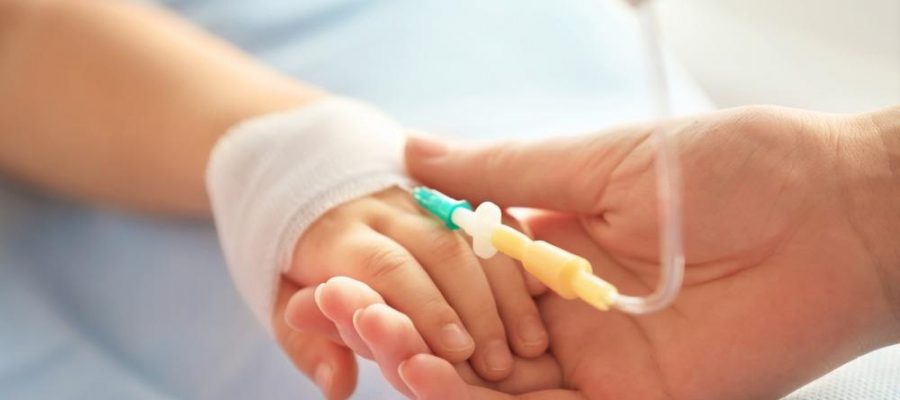Since April 2020, various international reports have identified a rare but dangerous multisystem inflammatory disease in children infected with the severe acute respiratory syndrome coronavirus 2 (SARS-CoV-2).
Some of the most common symptoms associated with this disease included fever, hyper-inflammation, a Kawasaki Disease (KD)-like presentation, as well as a shock-like condition that overlaps with toxic shock syndrome (TSS). Taken together, this condition has been referred to as pediatric inflammatory multisystem syndrome temporally associated with SARS-CoV-2 (PIMS-TS) or multisystem inflammatory syndrome in children (MIS-C).

Study: Epidemiology and role of SARS-CoV-2 Linkage in Paediatric Inflammatory Multisystem Syndrome (PIMS): A Canadian Paediatric Surveillance Program National Prospective Study. Image Credit: Africa Studio / Shutterstock.com
About the study
The Canadian Pediatric Surveillance Program (CPSP) is managed by the Canadian Pediatric Society and the Public Health Agency of Canada (PHAC) and collects data on rare diseases and conditions with high morbidity and mortality rates. In March 2020, CPSP began a countrywide study of acute SARS-CoV-2 infection, which was quickly adapted to incorporate surveillance of PIMS-TS after reports emerged on this post-infectious hyperinflammatory syndrome associated with SARS-CoV-2 infection.
In a recent study published on the medRxiv* preprint server, researchers utilize CPSP data to analyze the clinical effects and implications of SARS-CoV-2 infection in children who were hospitalized due to potential PIMS-TS.
Herein, the CPSP established a surveillance case definition of the suspected pediatric inflammatory multisystem syndrome, which included persistent fever, elevated inflammatory markers, KD, and/or TSS features. Notably, no alternative diagnosis was provided for the patients included in this study.
Demographic, clinical, laboratory, and treatment information on each patient was also included. With body surface area normalized measurements, coronary artery anomalies were identified by lesion Z-scores.
Study findings
The CPSP PIMS study consisted of 493 patients, 406 of whom met the criteria for the PIMS study. Of these patients, 202 children were diagnosed with PIMS and ultimately included in the final analysis.
Almost 67% of the study participants had close contact with a COVID-19-positive patient, whereas 52% were confirmed to be positive for COVID-19 through the reverse transcription-polymerase chain reaction (RT-PCR) assay and 48.0% had positive serology results. Almost 28% of PCR-positive patients were positive during their hospital stay, whereas the remaining patients tested positive for COVID-19 at a median of 4.6 weeks prior to their admission to the hospital.
The median age in children who were hospitalized for PIMS was 5.4 years, with over 60% of hospitalized pediatric patients being male. Although most children were healthy before their PIMs diagnosis, 16.7% reported pre-existing comorbidity, of which included asthma, neurologic conditions, and obesity in 5.9%, 3%, and 3% of the patients, respectively.
The median cumulative period of fever across all PIMS patients was six days. In addition to fever, gastrointestinal symptoms were reported by 76.8% of the children. Other symptoms including rash, bilateral nonexudative conjunctivitis, and discomfort around the mouth were reported in 70.9%, 704%, and 64.5% of patients, respectively.
COVID-19-positive patients were more likely to experience gastrointestinal symptoms, as well as shock and hypotension. Comparatively, patients who were negative for COVID-19 upon their admission to the hospital were more likely to experience KD characteristics such as alterations around the mouth and peripheral extremities.
About 49% of the PIMS patients who underwent echocardiograms had cardiac involvement. Moreover, coronary artery abnormalities were present in almost 27% of patients, followed by heart function problems identified in 18.1% of patients, with a median minimum ejection fraction of 45%.
Children under the age of one were more commonly diagnosed with coronary artery abnormalities with Z-scores exceeding 2.5. Furthermore, children between the ages of six and 17 exhibited lower heart function than those of a younger age.
Serum troponin levels were increased in 44% of those tested, with a median peak of 13 ng/L. COVID-19-positive patients were more likely to experience lower heart function and higher troponin levels as compared to COVID-19-negative patients. No difference in coronary artery lesions was reported.
Implications
Although PIMS is uncommon, it is a serious adverse effect associated with SARS-CoV-2 infection in children, with nearly one in every three hospitalized children requiring admission to the intensive care unit (ICU). Children aged six and above, as well as those infected with SARS-CoV-2, are at risk for ICU hospitalization.
Taken together, the findings from the current study provide important information that can be used to support the widespread vaccination of children against COVID-19. Furthermore, the study findings can help to better identify the epidemiology of PIMS in Canada, as well as provide guidance on its treatment.
*Important notice
medRxiv publishes preliminary scientific reports that are not peer-reviewed and, therefore, should not be regarded as conclusive, guide clinical practice/health-related behavior, or treated as established information.
- El Tal, T., Morin, M., Morris, S. K., et al. (2022). Epidemiology and role of SARS-CoV-2 Linkage in Paediatric Inflammatory Multisystem Syndrome (PIMS): A Canadian Paediatric Surveillance Program National Prospective Study. medRxiv. doi:10.1101/2022.05.27.22275613. https://www.medrxiv.org/content/10.1101/2022.05.27.22275613v1.full-text.
Posted in: Child Health News | Medical Science News | Medical Research News | Medical Condition News | Disease/Infection News | Healthcare News
Tags: Assay, Asthma, Child Health, Children, Conjunctivitis, Coronavirus, Coronavirus Disease COVID-19, Epidemiology, Fever, Heart, Hospital, Hypotension, Inflammation, Inflammatory Disease, Intensive Care, Kawasaki Disease, Laboratory, Mortality, Obesity, Polymerase, Polymerase Chain Reaction, Public Health, Rash, Respiratory, SARS, SARS-CoV-2, Serology, Severe Acute Respiratory, Severe Acute Respiratory Syndrome, Syndrome, Toxic Shock Syndrome, Transcription, Troponin
.jpg)
Written by
Colin Lightfoot
Colin graduated from the University of Chester with a B.Sc. in Biomedical Science in 2020. Since completing his undergraduate degree, he worked for NHS England as an Associate Practitioner, responsible for testing inpatients for COVID-19 on admission.
Source: Read Full Article
